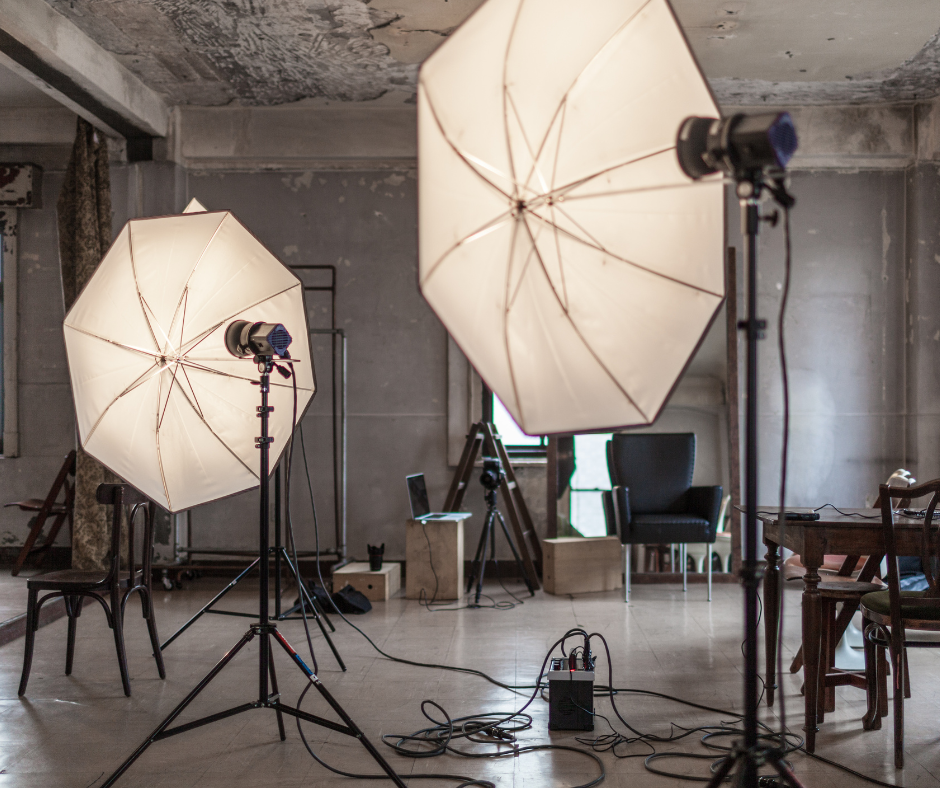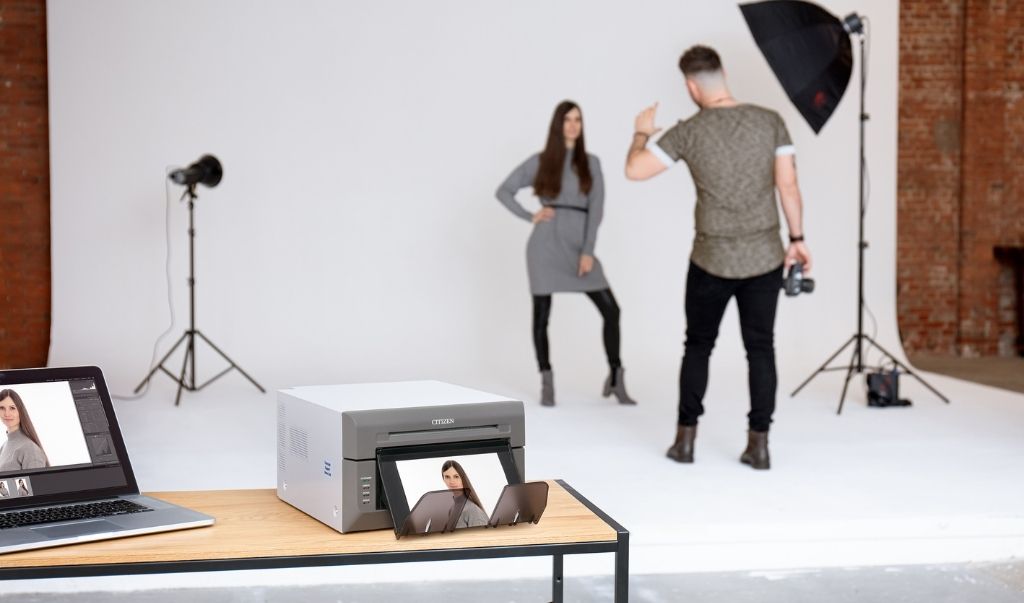In an era dominated by digital screens and high-end monitoring in photographic studios, the allure of physical prints still captivates and aids the discerning eye of professional photographers across the globe. Much like the instant reference provided by legendary Polaroid prints in the analogue era, dye sublimation photo printing has emerged as the modern equivalent, bringing a tangible and timeless quality to the studio environment and the professional photographer’s workflow.
Real Reference
High-quality monitors offer a precise representation of a potential image, adapting in real-time to give a photographer a constant reference. On the other hand, physical photo prints offer a distinctive and valuable technical reference for photographers and a strong visual reference for clients. The tactile experience of holding a print in one's hands gives professional imagemakers a unique opportunity to scrutinise and engage with their work on a truly granular level, surpassing the limitations of digital screens. This, by no means, is a recent phenomenon but has been tried and tested with roots that make up the very fabric of the photographic process as we know it today. This is especially true of the analogue-only era when photographers often relied on instant prints as an immediate reference for their creative process and to engage with their clients.
In the 1970s and 1980s, renowned photographers embraced the convenience and immediacy of instant printing, leveraging it as an invaluable tool in their professional workflow. One such luminary was Ansel Adams, the iconic landscape photographer known for his meticulous attention to detail and mastery of black-and-white photography. While Adams was primarily associated with large-format film, he was an early adopter and recognised the value of instant printing for the rapid assessments of lighting and composition in the field. The instant feedback provided by these prints allowed Adams to make crucial on-the-spot decisions, refining his vision and ensuring the precision that defined his work.
Similarly, fashion and portrait photographers like Irving Penn also integrated instant photo printing technology into their creative process. Penn, celebrated for his distinctive approach to portraiture and fashion photography, utilised instant prints as a means of instant assurance for lighting configuration and model positioning during his lengthy studio sessions. The immediacy of these prints allowed him to experiment with different techniques, ensuring that the final images met his exacting standards and could be replicated in controlled studio environments more easily in the future.
In the world of documentary photography, Mary Ellen Mark, noted for her intimate and empathetic portrayals of diverse subjects, also regularly used instant printing to establish a quick rapport with her subjects. The tangible nature of the instant prints facilitated a connection between the photographer and those being photographed, breaking down barriers and capturing authentic moments that might have been elusive in a more formal studio setting. Photographs are personal and they capture magical and personal moments, so it isn’t hard to imagine the power of Mark’s approach in sharing these prints to make connections with people.
These examples highlight the enduring importance of physical photo printing in the creative process of many master photographers. While the technology has evolved from instant photo to the modern equivalent that is dye sublimation printing, the fundamental principle remains unchanged. The act of holding a print in hand provides a visceral connection to the image and of the moment, allowing photographers to engage with their work and subjects in an intimate manner that transcends the sterile glow of a digital screen. In this context, the use of dye sublimation photo prints in modern studios becomes a continuation of a tradition that embodies a commitment to craftsmanship and a deeper understanding of the photographic art form.
From the photographer’s perspective, holding a print allows them to scrutinise details of their technical setup in a way that a screen simply cannot replicate. In a studio setting, where attention to detail is paramount, having a physical print as a reference aids in evaluating aspects such as colour accuracy, tonal range, and fine details is crucial to the photographic process. It becomes a benchmark for the photographer to assess the success of their vision and make informed decisions during the editing process.
The Aesthetic Difference
The shift towards digital photography has undeniably revolutionised the way photographers work. The ability to instantly review shots on a sophisticated monitor is a far cry from the days when photographers relied on instant prints for a quick reference to examine lighting and composition. However, even the most advanced studio monitors cannot replicate the unique aesthetic reference of a dye sublimation print.
Dye sublimation, or Dye Sub photo prints, boast a depth and richness that goes beyond what screens can convey. The process involves transferring dye onto paper media which creates prints with a level of detail and colour accuracy that is truly exceptional. The images produced have a real and tactile quality, capturing nuances of light and shadow in a still image that might well be overlooked on a constant digital display. This experience adds an extra layer to the photographer's connection with their work, providing a distinct perspective on the moment captured.
The Client's Perspective
Beyond the photographer's realm, clients also derive immense satisfaction from viewing physical reference prints. In a world inundated with digital images, a physical print becomes a cherished memento of the day's efforts. It serves as a sneak peek into the final product that will emerge after the meticulous editing process.
Clients often find reassurance and delight in holding a physical representation of their memories. It provides a real connection to the photographer's artistry and enhances the overall experience of the photoshoot. In the era of immaterial digital files, a print stands out as a lasting testament to the collaboration between photographer and client.
Beyond the primary focus of printed reference material, the utility of dye sublimation prints extends beyond this singular function. Dye sublimation prints also contribute to the creation of physical portfolios, adding a sophisticated touch to a photographer's body of work. The tactile nature of prints enhances the viewing experience, leaving a lasting impression on potential clients or collaborators. Studios also often engage in exhibitions or open houses to showcase their work and to win new clients. Dye-sub prints, with their exceptional quality, are ideal choices for such events.
When presenting work to clients, having physical prints elevates the customer experience. It becomes a focal point of discussion, allowing clients to engage with the images on a deeper level and fostering a more meaningful connection between the photographer's vision and the client's expectations.
Citizen Photo Printers - Next-Level Dye Sublimation Printing
In the realm of dye sublimation printing, Citizen stands alone with its range of photo printers. Renowned for their enduring reliability and quality, Citizen's dye sub printers have become trusted companions for photographers seeking on-site printing solutions.
One standout feature of Citizen's printers is their ability to deliver consistent and vibrant prints, meeting the high standards demanded by professional photographers. The seamless integration of advanced dye sublimation technology ensures that each print reflects the true essence of the captured moment.
Moreover, the versatility of Citizen's printers caters to a wide range of applications in the professional studio setting. Whether it's producing reference prints for painstaking scrutiny or delivering definite proofs to clients, Citizen's dye sub printers stand as reliable allies in the photographer's arsenal.
No.1 For Dye Sub Printing
In the ever-evolving landscape of photography, where technology constantly pushes boundaries, the enduring charm of dye sublimation photo prints remains unparalleled. The aesthetic nuances, tangible references, and client satisfaction derived from physical prints continue to make them an integral part of a professional photographer's toolkit. Whilst technology has progressed greatly since the early days of instant photography, the impression made on a client and the value of the physical reference is as valuable as it has ever been.
Citizen's commitment to excellence in dye sublimation printing further enhances the appeal of physical prints in the studio. As technology progresses, it's reassuring to know that in the realm of photography, some traditions persist, reminding us that the marriage of art and technology can yield timeless results.
See the full range and find your local supplier at our dedicated photo pages: www.Citizen.Photo


-3.png)
-2.png)
